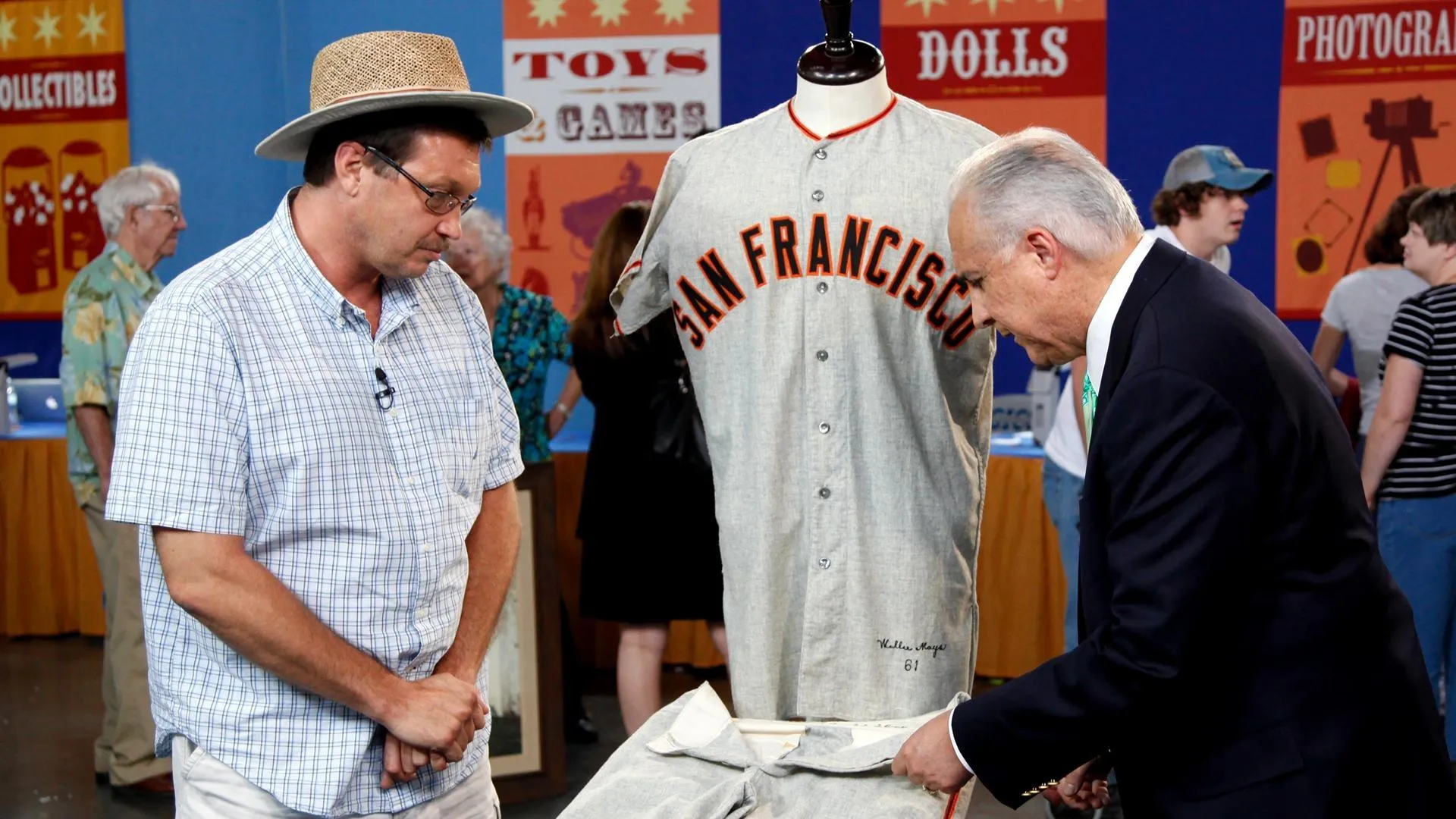GUEST: I was living in Los Angeles in about 1991, and I came home one day, and a box was on my front step. I took it inside, I opened it up, and I found this. And I found an address on the outside of the box that was a post office box which I knew to be my father's. I gave him a call, and I said, "Where did this come from?” And he said, "It was something your grandmother picked up when she traveled around the world in the 1950s." And he said, "It struck me as the kind of thing that you ought to have."
APPRAISER: The figure is a Chinese bronze guardian figure. These are celestial beings. It's a religious figure. It dates from the 17th century, so it's late Ming. It's a well-cast bronze. They are examples of the robe, which are in very uniform high relief. So it's very finely cast. This ribbon latticework on either side, the tunic, the beast masks to the vest, are very well cast. We move up to the head, and we start to see what we refer to as falling away. The bronze becomes less crisp, less defined.
GUEST: Okay.
APPRAISER: And you'll see this crown almost falls into itself. The cast may have been coming to an end. The crispness of the cast was becoming lost, like woodblock prints. So many prints, the woodblock no longer has its sharpest edge. This would have been potentially gilded with polychrome gilding, with glass beads, glass jewelling. It would have been very vibrant. It would have really had a presence about it. Bronze is relatively scarce. This has a good period patina. It still has a good coffee hue to it. It's not been polished. Many of the glass beads remain intact. And it's a heavy, heavy casting. So it was a good quality casting in the 17th century. A conservative auction estimate today would be between $15,000 and $20,000.
GUEST: Okay.
APPRAISER: Ten years ago, these guardian figures would carry an auction estimate of $2,000 to $3,000.
GUEST: I see.



